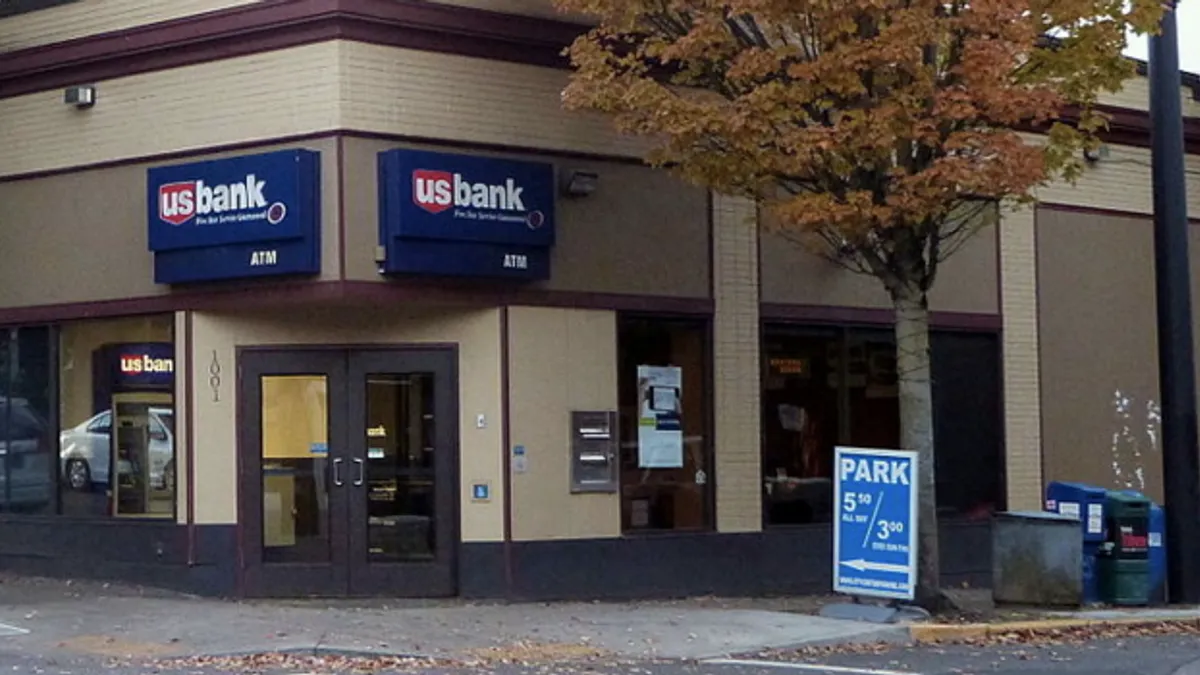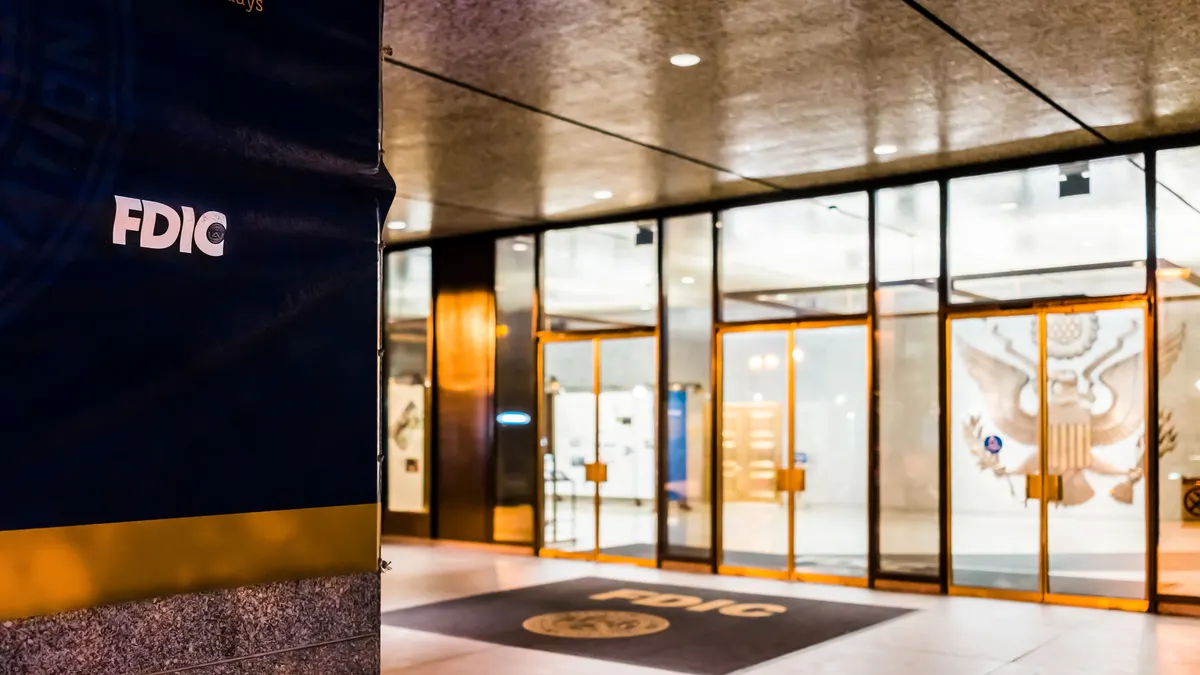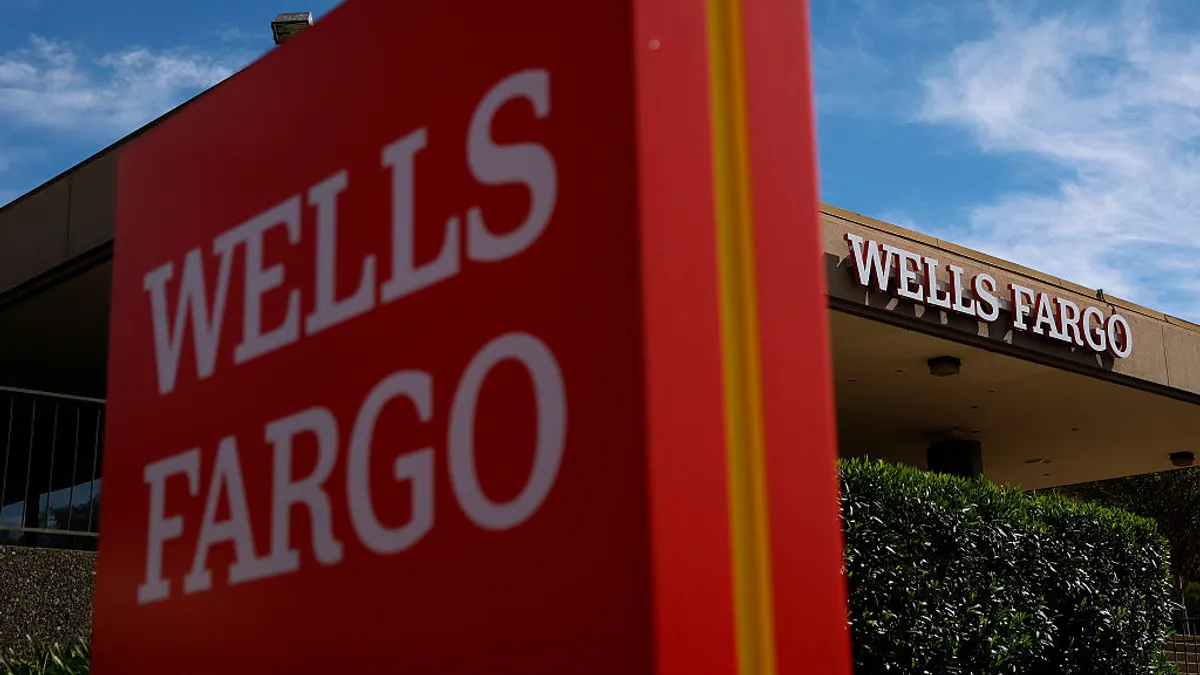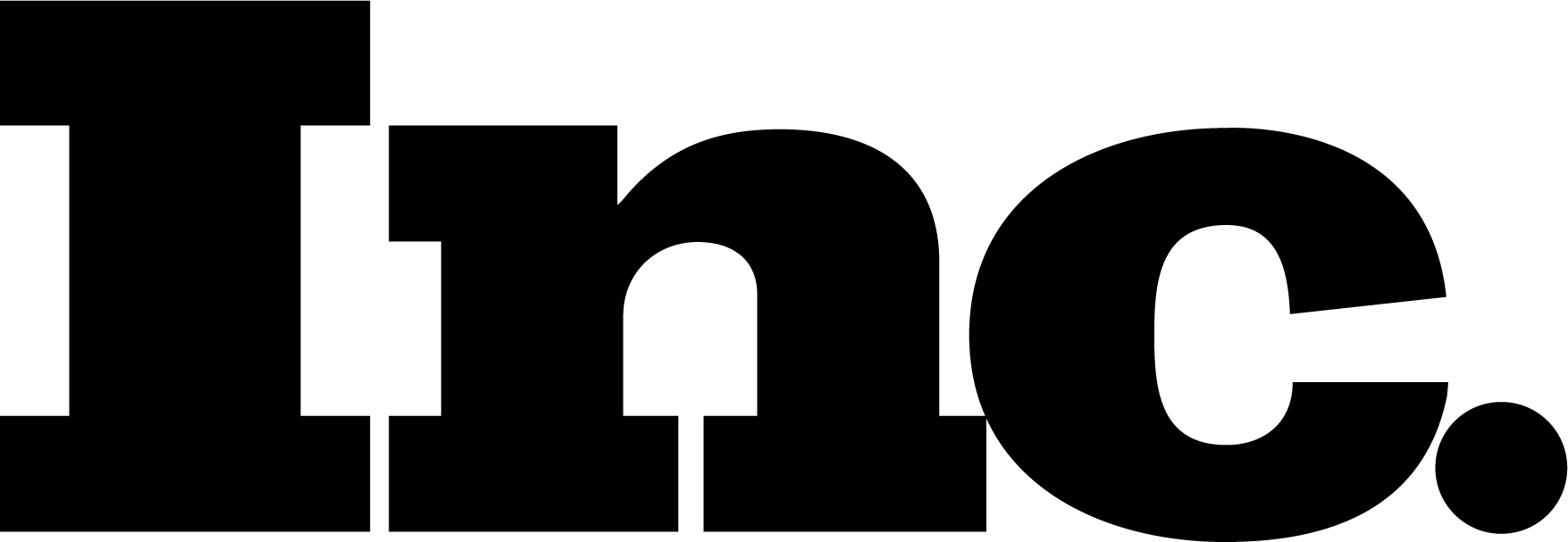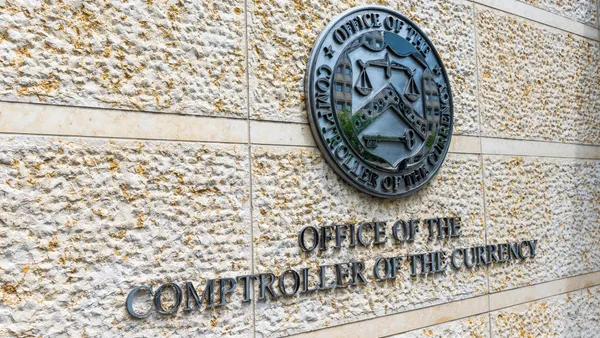Dive Brief:
-
U.S. Bank reported fourth-quarter net income of $1.51 billion Wednesday, a 2.2% increase from the $1.48 billion the bank reported in last year's comparable quarter.
-
Unlike JPMorgan Chase, Citi and Bank of America, U.S. Bank chose not release any of its loan loss reserves during the quarter. Since the start of the pandemic, the Minneapolis-based bank has built up an $8 billion allowance for credit losses to shield from the economic impacts of the virus, and to comply with new accounting standards.
-
"We ended up looking at the uncertainties that exist out there, and we want to be able to see a reversal of some of the restrictions and a reversal of the COVID cases," said Andy Cecere, U.S. Bank's president and CEO. "I think we're starting to see that happening, which is a good sign, but that's one of the reasons that we held pat with respect to the allowance for credit losses at this point."
Dive Insight:
Average total deposits for the fourth quarter were $66 billion, an increase of 18.5% compared with the fourth quarter of 2019, the bank reported.
U.S. Bank said approximately $10 billion of its deposits this quarter were related to the acquisition of deposit balances from State Farm's banking business last year.
"That was an acquisition of card balances as well as deposits, so we would expect continued increases in both of those categories in addition to other opportunities in small business and other banking products with that alliance," Cecere told analysts Wednesday. "That is going very well, and the conversion was very smooth."
The bank, which has been consolidating its branch network over the past several years, said it completed its branch closure project this month, shuttering nearly a quarter of its brick-and-mortar locations.
"We were just over 3,000 branches, and now we're down about 25% with just over 2,300 branches," Cecere said. "That's really a function of consumer behaviors."
Cecere said 77% of the bank's customers are using its digital channels.
"Those using the branch channel, while still important for seeking advice and counsel, is down to about 40%, so there's a behavior change that's accelerated as a result of pandemic," Cecere said.
Despite the drawdown on branches, the bank is still pursuing expansion in new markets, such as Charlotte, North Carolina, with its branch-lite model, which involves placing relatively few branches across a specific area.
Cecere told analysts the bank still plans to open 12 branches in Charlotte, but the rollout may see a slight delay because of the coronavirus.
"The way we would open in a new market would be significantly different than the current business model," he said, adding the bank operates 85 to 100 branches around Minnesota's Twin Cities.
In terms of an overall target for branches, Cecere said he believes the bank is at a relatively stable point.
"We'll continue to look at opportunities to optimize branches, at the same time opening new branches," he said. "But I wouldn't expect substantial changes in the near term."



